Movie Review By: SFAM
Year: 2004
Directed by: Hiroki Yamaguchi
Written by: Hiroki Yamaguchi
IMDB Reference
Degree of Cyberpunk Visuals: High
Correlation to Cyberpunk Themes: High
Key Cast Members:
- Luchino: Luchino Fujisaki
- Elevator Operator: Ninalada Mochiduki
- Business Man: Viblio Sawatsukumori
- Housewife: Alamocia Nakaji
- Headphone Guy: Nocosh Utsunomiya
- Serial Rapist (prisoner): Zitacock Obitani
- Bomber (prisonor): Calpico Teranouchi
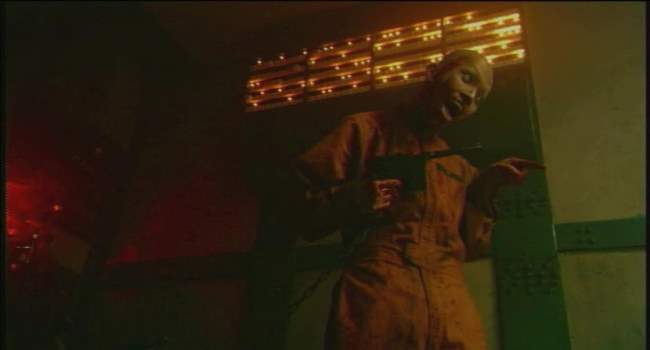
Overview: One thing I love about Indie movies is the opportunity for complete originality. Indie director Hiroki Yamaguchi delivers a strange, but very well made micro-budget movie that is truly unique. From viewing the extras, virtually every part of the set was designed by searching through junkyards for throw-offs. Similar to the Cube, Hellevator: The Bottled Fools largely takes place on a single set. Similar to Brazil, the world of Hellevator is a bizarrely dystopic surveillance society where things just don’t seem to work right. Nobody got paid who worked on this, but you wouldn’t know it from the quality. Hellevator definitely has its own feel.

The Setting: Hellevator takes place in a non-specific dystopic near future, where a colony of people have long ago decided to move underground. While some aspects of life clearly involve advanced technologies, there is a strong analog, mechanistic component to society. Now, all life takes place in a very large megalopolis comprised of a set of very large levels and tunnels. Life is fully governed by an omnipresent security force, who have cameras in all key locations. Over 130 levels in all, each has a specific purpose. Some have hospitals or schools, others are power centers, and Level 99 is the prison ward. Because everything is underground, issues related to air quality are at a premium. Smoking is illegal, and merits a death sentence. To get from each level, people use these very large, mechanical elevators.

The Story: The beginning of Hellevator starts off with a television report of a set of explosions on Level 138, which ends up killing over 100 people. The police have pegged a few suspects of causing this crime, both of which ended up stuck on an elevator which malfunctioned during the explosion. Flashback to Luchino (played by Luchino Fujisaki) who is a troubled teen-age girl living on Level 138 who is on her way to school, which is on Level 4. She has a penchant for rebelling against the system and starts her day by illegally purchasing cigarettes from a drug dealer. Unfortunately, she almost gets caught, and ends up leaving her still burning cigarette butt at the power center near a set of flammable fluid containers.
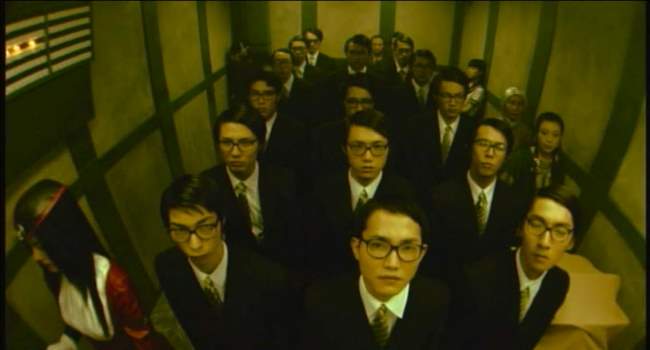
Luchino gets on the elevator to take her to level 4, which is where the rest of the story takes place. On each floor, new people get on while others leave. Eventually when the elevator gets past 110, the elevator operator announces that they have entered the “express mode” – no more stops should occur for a long time. At this point, the elevator is holding the white-gloved elevator operator (Ninalada Mochiduki), a business man (Viblio Sawatsukumori), a woman with a baby carriage (Alamocia Nakaji), a quite guy with headphones (Nocosh Utsunomiya) and Luchino. Unfortunately, the elevator is force-stopped at level 99, the prison level. Two prisoners, one a bomber (Calpico Teranouchi), and the other a serial rapist (played wonderfully by Zitacock Obitani) get on with a very unstable young prison guard. Shortly afterwards, the explosion on Level 138 occurs. This causes the elevator to malfunction, and the small group is now stranded.
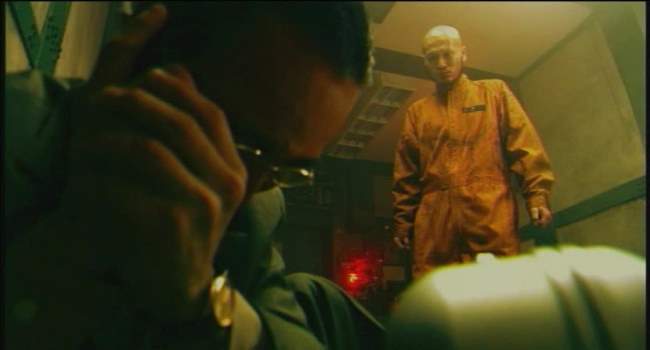
The malfunctioned elevator becomes a powder keg for runaway paranoia. The prison guard starts to lose it, and through a strange sequence of events, causes the prisoners to become free. The rapist quickly beats the guard to a pulp, which ends with a sequence where he takes a bite out of the guard’s neck. From there the prisoners sadistically start to impose their will on the beleaguered elevator participants. The rapist starts to do his thing on the elevator operator and eventually starts kicking Luchino. Luchino starts to have flashbacks of times when her father abused her similarly - Luchino eventually snaps. She picks up the gun and starts to repeatedly shoot the bomber prisoner.

From there, the story devolves into a repetitive set of sequential events which cause various people on the elevator to lose control. Some result in murders while others result in interesting character expositions. Throughout, the mood is high tension paranoia. Eventually, the THX-1138-like guards break the remaining few left alive. The story then connects back to the police detective, who is in the process of interviewing those that survived the elevator trip. The ending, not discussed here, provides a different take on the world which this future takes place.
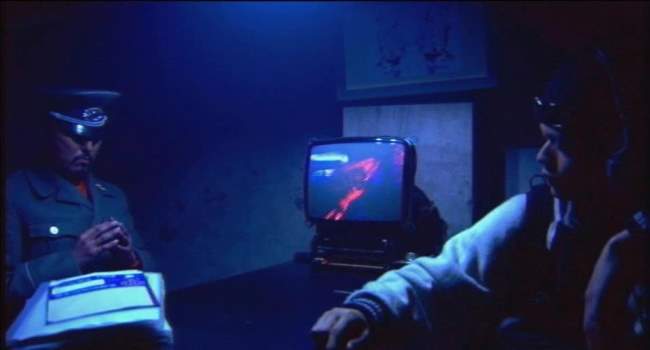
The Acting: The acting in Hellevator is far better than one would expect in a movie where nobody was getting paid. Luchino Fujisaki turns in a solid performance as a person devolving back into psychosis. Zitacock Obitani is terrific as an extremely bizarre serial rapist, and almost makes the movie a must-watch all by himself. The rest of the cast works. The only stand-out lousy performance is turned in by the blond haired prisoner guard, but he doesn’t last long enough to matter.

The Cinematography: Hellevator, uses two omnipresent color schemes: within the elevator, everything is dingy yellows and greens. For the police interrogation scenes, everything is dark blue. Yamaguchi makes liberal use of perspective shots, sometimes involving fish-eye lenses, and frequently looking down or up at the participants. In short, Yamaguchi makes the most of a very limited budget and set. He even throws in a Matrix slo-mo shot that was apparently filmed with a single camera.
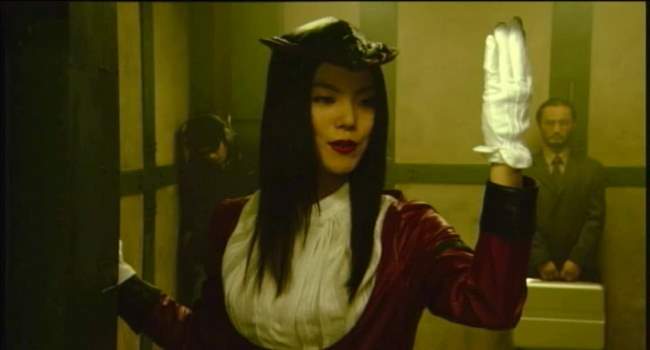
System Service Staff as Robots: In Hellevator, the elevator lady acts completely robotic until the convicts break things. Her overt disposition is of a person who never gets rattled, never intimates a personal connection, and never changes her demeanor regardless of the surroundings. In a sense, she is the perfect employee for the underground megalopolis. Similar to movies like Brazil or 1984, the elevator lady represents the humans as machines metaphor. In this view, we are nothing more than a single redundant part – a cog in a massive machine. For the ideal system employee, individualism has been quashed in favor of ritualized, repeatable routines.

Telepathy: Hellevator does a good job of integrating telepaths into its strange world. The majority of the people are normal, and do not recognize the telepaths. In Hellevator, the Telepaths are able to notice when another uses their sensory perception. What makes Yamaguchi’s view of telepath’s somewhat interesting is he also touches on their ability to see others’ memories. This leads to some interesting flashbacks of others’ experiences on the elevator. More interesting though is the fact that Luchino’s personal psychosis colors her views of the others’ memories. This turns reading thoughts into something far less precise, and in the end makes it more believable.

Repression Exposed by Extreme Psychological Pressure: Hellevator explores extreme psychological pressures on a group of already unstable people. Everyone stuck on the elevator is hiding something significant about themselves. The businessman is potentially a bioterrorist; the woman with the crib is hiding groceries instead of a baby, and the quiet guy in the corner is masquerading as a cop. Luchino had been abused by her father to the point that she eventually flipped and killed him. She has since repressed her issues but when placed in a similar circumstance, Luchino responds similarly and goes on to murder one of the convicts. Her perception of reality starts to bear little resemblance to the rest. The robotic elevator woman turns into an emotional basket case. Although this is a fully reasonable reaction to an attempted rape, the contrast shown is with her earlier robotic persona. In fact, everyone, when thrown into this circumstance acts in wholly strange ways.
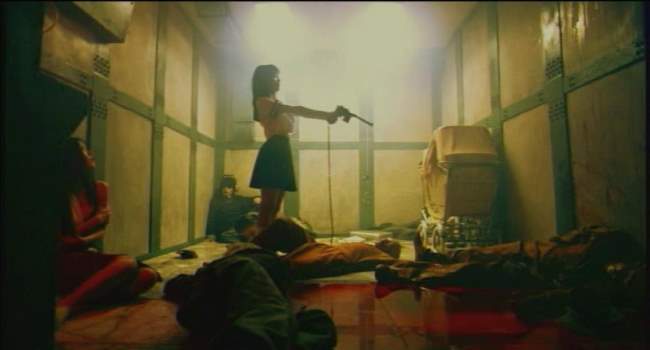
The Bottom Line: If you like Extreme Japanese Cyberpunk movies, Hellevator: The Bottled Fools is well worth a watch. There’s quite a bit of blood and gore, but not when compared to some of the more extreme straight Japanese horrors. The plot is pretty straightforward once the movie gets moving – I would have wished for a bit more interplay between the plot points. Also, there are a number of plot points which were touched on as significant, but were never completed. But overall, the movie is original and interesting. Little throwaways like the child’s pet brain only add to the fun. Yamaguchi and crew really make the most of their set and the overall shoot. This one will stay with you for a few days.
Page 2: More Screencaps –>>
Movie Review By: Mr. Roboto
Year: 1992
Directed by: Phil Alden Robinson
Written by: Phil Alden Robinson, Lawrence Lasker, Walter F. Parkes
IMDB Reference
Degree of Cyberpunk Visuals: Low
Correlation to Cyberpunk Themes: Medium
Key Cast Members:
- Martin Bishop (”Marty”): Robert Redford
- Donald Crease: Sidney Poitier
- Erwin Emory (”Whistler”): David Strathairn
- “Mother”: Dan Akroyd
- Carl Arbegast: River Phoenix
- Liz: Mary McDonnell
- Cosmo: Ben Kingsley

December 1969: Marty and Cosmo just helped the Republicans make a donation to the Black Panthers. Right on!
OVERVIEW: Martin Bryce is a fugitive since December 1969 when he left for pizza while his friend, Cosmo, was arrested for their hacking activities. Now living as Martin Bishop, he leads a “tiger team” that tests security systems. Two men claiming to be from the NSA want to hire Marty’s team to retrieve a “black box” developed by a brilliant mathematician for a project called “SETEC Astronomy.” They succeed in retrieving the box, but when they discover what it is, that’s when the real danger begins…
Note: Not an actual screen shot. Animation of key Scrabble moment in movie.

Remember: When playing Scrabble on Monterey’s Coast, keep score on My Socrates Note or you’ll end up with Cootys Rat Semen!
Sneakers is an intellectual cyber-caper movie that features an all-star cast with a slick production. There’s little question about this being a great movie to watch…
… But is it cyberpunk?: Some might question whether Sneakers qualifies as a cyberpunk movie. Other cyberpunk sites do list it as such, but does it make the grade here? Let’s compare it to SFAM’s idea of what makes a movie cyberpunk:
- Negative impact of technology on humanity: The “black box” is capable of breaking the most secure encryption codes without the need for a key. Whoever has this device can essentially read any e-mail, site, or whatever they want, without needing a decryption key. Sound pretty negative to me.
- Fusion of man and machine: In literal terms, no such fusion occurs here. The closest would be Whistler using his braille terminal, though one might say that Marty’s team does work like a well-tuned machine.
- Corporate control over society: Things are a bit hazy here. While there’s no such control apparent, one can imagine what the wrong people can do with the “black box.”
- Story focuses on the underground: Mary and Cosmo are hackers from the 60s. Cosmo works with organized crime (”Don’t kid yourself. It’s not that organized.”), and Marty’s team is mostly made from people who got into trouble with some type of technical activity.
- Ubiquitous access to information: The ability to decrypt and read any site or message. ‘Nuff said.
- Visuals and style: Being set in modern San Francisco (circa 1992) makes it impossible to depict a near future, but there are scenes where single colors and contrasting schemes are apparent: The red brick of the team’s office during the Scrabble scene, the darkness of Marty’s ride in the trunk of a car, Cosmo’s bluish office with the bright white “soundproof” room.
The movie itself has an intelligent style that often make viewers think about the consequences of the “black box” decrypter, politics, privacy, and the role of the NSA.
The Bottom Line: This is definitely one that needs to be in your collection alongside WarGames. It’s a fun, intelligent, and even humorous (sometimes darkly humorous) adventure into our privacy at stake. As to whether it can be called cyberpunk…
WHO CARES?
You’ll definitely like watching Sneakers and trying to decide for yourself
And while you watch this gem, keep this almost Matrix-like observation in mind:
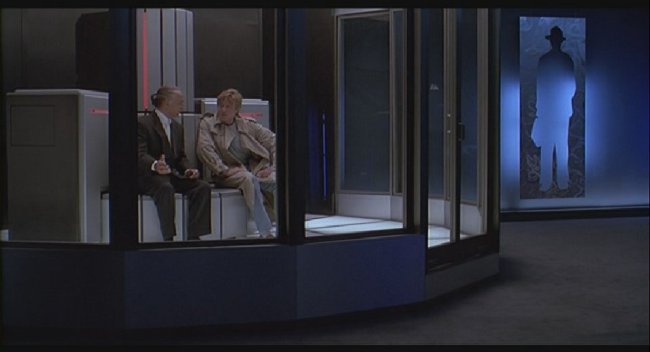
“… I learned that everything in this world, including money, operates not on reality. — But the perception of reality.”
Page 2: More Screencaps –>>
Movie Review By: SFAM
Year: 1984
Directed by: Michael Crichton
Written by: Michael Crichton
IMDB Reference
Degree of Cyberpunk Visuals: Medium
Correlation to Cyberpunk Themes: Medium
Key Cast Members:
- Sgt. Jack R. Ramsay: Tom Selleck
- Officer Karen Thompson: Cynthia Rhodes
- Dr. Charles Luther: Gene Simmons
- Jackie Rogers: Kirstie Alley
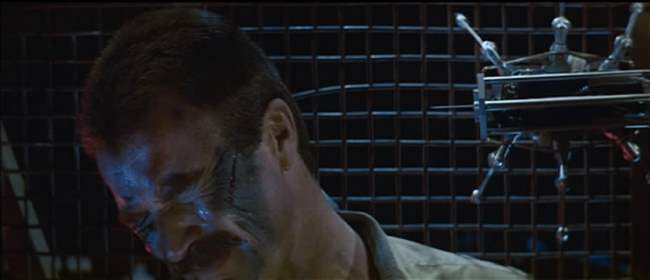
Overview: Sometimes cheese can be enjoyable. Michael Crichton’s movie, Runaway, is filled with too many straight-up Hollywood clichés to be taken seriously, but it’s still fun. Maybe it’s just because I’m a Die-Hard Magnum PI fan, or perhaps I love to see Gene Simmons’ evil glare. Runaway has some fun ideas, but the movie’s not great. It’s one of those movies where the bad guy can magically get anywhere and automatically knows everything. It is more fun than it deserves to be though.
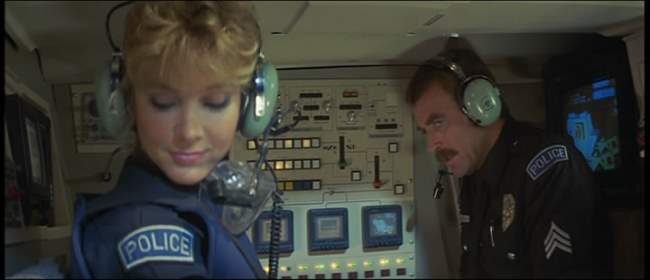
The Story: In near-future, society has taken full advantage of micro-electronics and robot technology. Many basic jobs, such as taking care of corn fields, are now carried out by robots. Robots even fulfill surrogate nanny roles for children stuck at home. In this world, Sgt. Jack Ramsay (Tom Selleck) is a specialist on disabling malfunction robots. Ramsay and his new partner, Karen Thompson (Cynthia Rhodes) get enmeshed in a series of incidents where robots have gone wild, sometimes with deadly results.
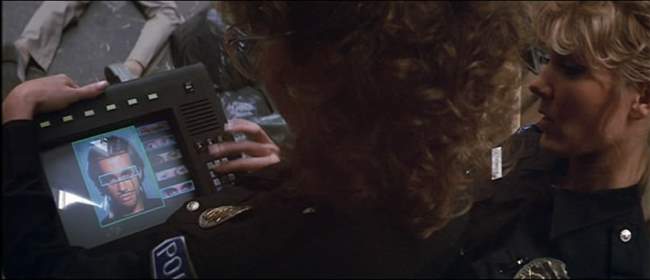
In investigating the faulty robots, they find that they have been modified with a special “assassin” computer chip that turns normal robots into man-killing death machines. The trail leads to Dr. Charles Luther (enjoyably played by Kiss rock star, Gene Simmons), and over-the-top evil genius who will stop at nothing to develop and sell these chips to the highest bidder. Ramsay and Thompson stop Dr. Luther by intercepting a chip delivery from his girlfriend, played by Kirstie Alley, and capture Luther’s chip design template for making new copies.

As the plot thickens, Dr. Luther brings out his toys. The most impressive gadget which the movie is most known for are mini-spiders that can jump 6 feet in the air, and deliver shots of acid. Luther also has heat-seeking bullets that can be targeted to an individual body heat profile, and mini-homing bombs on wheels called “lock-ons.” Things get tense when Luther kidnaps Ramsay’s kid to exchange for the chip template.
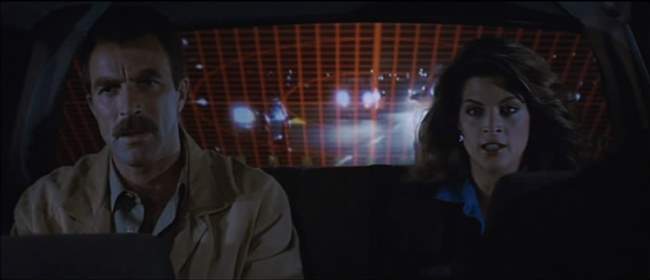
The Acting: The acting is nothing special in Runaway, and certainly lacks originality in any of the assigned roles – virtually every character is cookie cutter Hollywood fare. Tom Selleck basically plays his Magnum PI character, so if you like that guy, you’ll probably like his performance here. Cynthia Rhodes plays a shallow but cute sidekick who wants nothing more than to get it on with Selleck. Kirstie Alley’s role consists mostly of looking hawt. With that said, Gene Simmons is the really fun one to watch. All he really does well is “look evil” but he does this so well! This coupled with the fact that Simmons’ character is almost magical – he always knows where everyone is, and can infiltrate any location including a busy police station to log on to Ramsay’s computer with virtually no disguise. Again, we’re not talking high quality here, but it is fun.
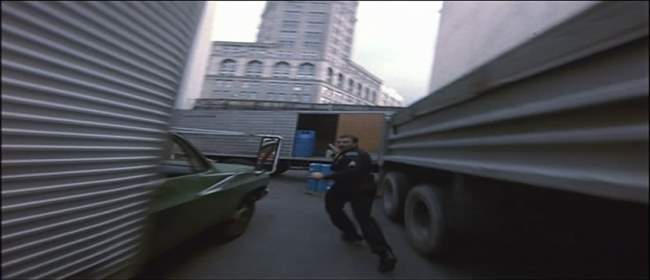
The FX: Runaway provides us with a number of low-budget cyberpunk toys, but probably the best effect employed was the use of the fish-eye lens to give us the perspective of the missile bullet. This simple camera effect makes the heat-seeking bullet far more believable than it should. But it’s the spiders which everyone recognizes. For some reason, these seemed far more believable to me when I watched this movie in the 80s. Now, they just sort of seem to sit there and wiggle. Still, when watching the ending sequence in Matrix Revolutions, where Neo walks through the tunnel with the high-quality CG spider-bots traveling everywhere, I was reminded of Runaway. So in that sense, Runaway’s toys have outlasted the movie itself.
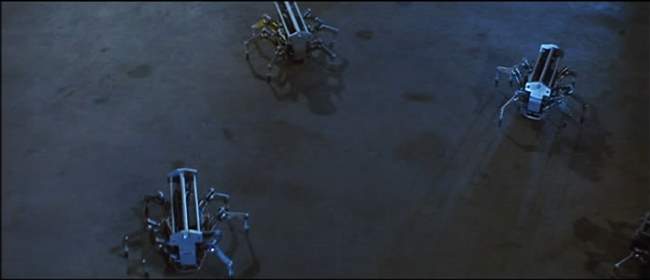
Evil Chips: I’m not really sure what this even means, but Runaway is predicated on the idea that “assassin” chips can be made. These chips provide an alternate instruction set which appears generic enough to work on virtually any robot. In looking at this, the idea reeks of Hollywood cheese. Wouldn’t it be cool though if someone could design an instruction set that could self-organize its commands based on its environment? I suppose Java does this in some ways in that its platform independent, but robot independent seems a bit more complicated.
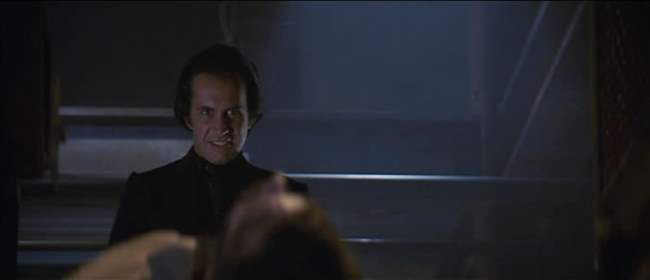
Dr. Luther is just another Dr. Evil: It’s amazing how a character can change the world of film. Ever since Austin Powers’ Dr. Evil character came onto the stage, it’s virtually impossible to take incoherent evil guys seriously. The moral of this story is had Dr. Charles Luther just paid off his henchmen, he would have escaped scott free. But since he had to come up with craaazy deaths for them, our hero had to come to the rescue.
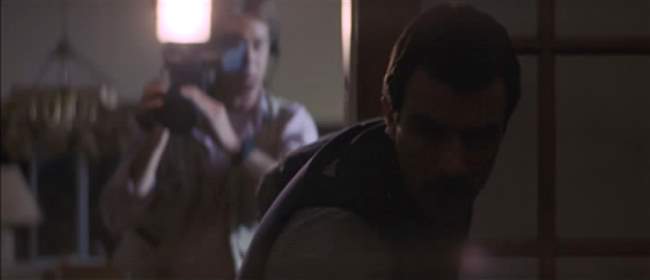
Full and Free Access by the Newsies: In Runaway’s future, the news organizations have the right to wherever they want, whenever they want. So much so that they’re allowed access during a police operation to save an infant from a crazed robot. This comes off as being fairly silly in the movie, as its hard to imagine them ever getting this type of access. This is more an indication of the perception folks had of news organizations in the 80s. How time changes things. Now the perception is that news organizations pretty hang out to wait for their stories to be hand-fed. They still excitedly arrive at standoffs and the like, but outside of a few brave souls who prowl the streets outside the green zone in Iraq, it’s hard to imagine news organizations today even bothering to investigate the most obvious of events.
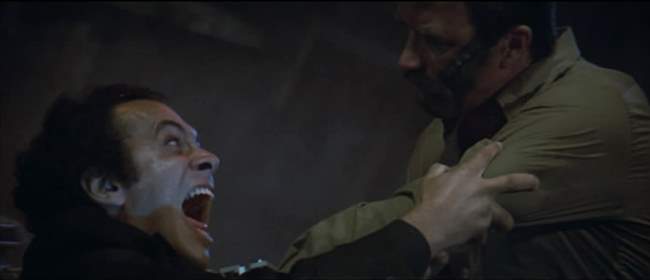
The Bottom Line: One has to wonder how a decent story teller like Crichton ends up taking some interesting ideas on technology and society and embedding them into a cookie-cutter Hollywood storyline. Things certainly happen in the production so who knows. Watching Runaway, you get the feeling that this should have been a better flick. But while the movie isn’t great, the spiders are fun, as is Gene Simmons’ glare. And if you’re a Magnum PI fan, chances are you’ll like it even better than one of the weekly episodes.
Movie Review By: Dan Swensen
Year: 1981
Directed by: Michael Crichton
Written by: Michael Crichton
IMDB Reference
Degree of Cyberpunk Visuals: Low
Correlation to Cyberpunk Themes: Medium
Key Cast Members:
- Larry Roberts: Albert Finney
- Cindy Fairmont: Susan Dey
- John Reston: James Coburn

Uneven, satirical, and oddly prophetic in its own half-baked way, Michael Crichton’s 1981 film Looker takes place in a terrifying universe of glamour, dehumanization, corporate deception, and Susan Dey hooking up with Albert Finney.
SFAM NOTE: We welcome new reviewer Dan Swensen, who also runs a terrific Sci-Fi blog called the Dimfuture.net. If others are interested in joining the review team, please post a message in the review forum.
Overview: The year is 1981, and pudgy, befuddled plastic surgeon Larry Roberts (Finney) becomes involved in a mystery when one of his models, dissolved in tears, arrives in his office raving hysterically about mysterious people trying to kill her. Hours later, the model inexplicably falls from the window of her high-rise apartment, and evidence of foul play points to Roberts himself. Justifiably concerned, Roberts begins playing amateur detective, teaming up with his patient (the vapid and insecure Cindy Fairmont, played by Susan Dey) to find out what’s really happening to these models, who seem to be dying off in droves shortly after visiting Roberts’ office to be “perfected.”
Mostly relying on the incompetence of the antagonists and the near-complete apathy of the cops, Roberts eventually tracks the clues back to a company called Digital Matrix, a computer graphics and advertising firm that specializes in creating digital replicas of top commercial models. While these models are given lucrative contracts in exchange for their digital likenesses, they seem to mysteriously die shortly thereafter, their handsome royalties left unpaid. It doesn’t take long for Roberts to figure out that Digital Matrix is duplicating these models, then killing them off, as their “digital doubles” will do their job better — and for free.

Machines and Misogyny: In an age where digital replacement and enhancement of actors is now extremely commonplace, Looker seems both surprisingly relevant and woefully dated at the same time. Penned in by Hollywood’s desire for complete perfection, the models of Looker fret over millimeter-sized flaws, consumed with self-loathing over even the slightest imperfection. As the story progresses, the audience finds this to be more than mere vanity — in Crichton’s world, Digital Matrix has reduced human behavior to a set of algorithms, able to determine (and manipulate) the focus of a viewer’s attention with ultimate precision to maximize product exposure and desire.
Because these manipulations require inhuman accuracy, the models themselves soon become not only obsolete, but liabilities to the company. The theme of dehumanization — the models looked upon by the corporations, and themselves, not as human beings but commodities to be used up and thrown away — is very strong in the first half of the film, underlined by a casual misogyny that may or may not have been intentional (it was 1981, after all).

In addition to the prophetic “digital doubles” of the film, Looker’s most science-fiction invention is the L.O.O.K.E.R. device (short for Light Ocular-Oriented Kinetic Emotive Responses), a “light gun” that stuns and paralyzes the target using light. Anyone exposed to this weapon experiences a sort of “missing time” as they stand paralyzed, allowing the weapon’s user to move around, invisible and undetected, for short periods. Digital Matrix uses the device to cover their tracks, making the models’ deaths appear as suicides.
While Looker is more than a bit plodding at times, the film’s use of this device is undoubtedly the most clever effect in the film, as characters find themselves losing time without knowing how or why. (It’s also worth mentioning that the L.O.O.K.E.R. device is the movie’s only real special effect, and provides the film’s most interesting visuals.) The L.O.O.K.E.R. device is a neat little concept, one I wish could have gotten better treatment in a better film.

The Bottom Line: Unfortunately, Looker is a movie with a few good ideas that don’t quite survive the runtime. The last half-hour of the movie is an extended game of “humorous” cat-and-mouse in which the heroes and villains chase each other through a virtual landscape of digitized commercials — the best of which is a genuinely macabre moment featuring digitized kids complaining about their breakfast cereal as a real human lies dead on the prop kitchen table.
While these scenes are mildly funny on a multitude of levels (the style of commercials, for all their “digital” glory, are more akin to something out of the Fifties than anything out of science fiction), they’re out of tone with the rest of the film. Albert Finney is no action hero, and doesn’t even have the charisma necessary to be a good everyman. Susan Dey’s character is too insecure and flat to be anything but an object of pity, and James Coburn’s turn as the villain, while passable, is too brief to be interesting.

A mustachioed Eighties thug gets a taste of the L.O.O.K.E.R. device.
That’s not to say that the film can’t be enjoyed as good cheese, however — there are some amusingly inept moments (watch for the car “crashing” into the fountain), and the few special effects are decent enough. Overall, Looker is probably more interesting as a historical piece than as a thriller — though it’s dated badly on a number of levels, the ideas of dehumanization and artifice that it puts forth were, for 1981, surprisingly forward-thinking. It might also be interesting to note that Looker made the first real attempt at a realistic CGI character, as well as the first movie to used 3-D computer shading.
After its release in theaters, Looker haunted the bleak hinterlands of early Eighties cable television for awhile (probably sandwiched somewhere between showings of Krull and The Entity), and is out on DVD now. Oh, and if you care about that sort of thing, Susan Dey is naked in it.
-Dan Swensen
Movie Review By: SFAM
Year: 1997
Directed by: Andrew Niccol
Written by: Andrew Niccol
IMDB Reference
Degree of Cyberpunk Visuals: Medium
Correlation to Cyberpunk Themes: High
Key Cast Members:
Vincent Freeman: Ethan Hawke
Jerome Eugene Morrow: Jude Law
Irene Cassini: Uma Thurman
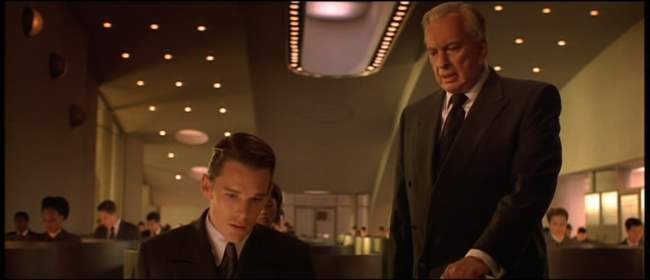
Overview: Director Andrew Niccol explores the potential horrors of genetic engineering in Gattaca. Originally seen as a flop, taking in only 12 million on a 36 million dollar budget, Gattaca has developed a loyal following from cable and DVD viewings. Whether or not people find this movie enjoyable or believable, virtually everyone agrees that Gattaca is quality film. Viewers will definitely notice a well paced movie that’s wonderfully acted in artfully composed scenes.
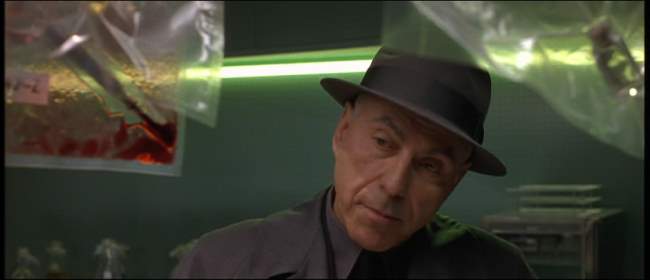
The Setting: In an unspecified near future time frame, genetic engineering has altered the course of society. Genetic engineering is employed to remove all major defects when conceiving. Upon birth, each new-born baby is given a Genetic Quotient (G.Q.) that details their potential risk areas, including heart issues and susceptibility to diseases. Some couples still ignore the genetic engineering of children and instead go for a “faith birth” – one where potential defects in the baby are left to chance. Unfortunately, these “faith” children now grow up in a world where their genetic pedigree significantly reduces their opportunities. A surveillance society is now in place where people are divided into having either “valid” and “in-valid” status. Highly sought after jobs are only available to those with “valid” status, while “in-valids” are left to handle the menial tasks of society.
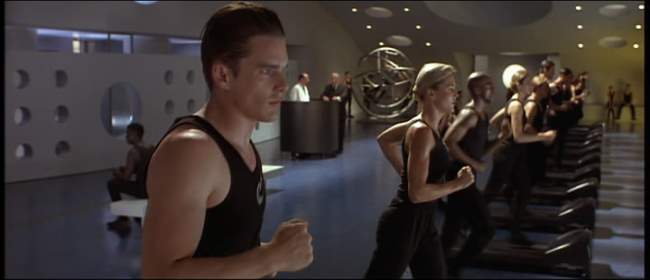
Ethan Hawke plays a flawed “faith birth” named Vincent Freeman who dreams of becoming an astronaut. Vincent is particularly flawed, and is predicted to have a 99% chance of heart failure by age 30. All but the most menial jobs are out of reach for “de-gene-erits” like Vincent, and he is told by both is parents and his genetically engineered brother to lower his expectations. But Vincent decides to defy the odds. Vincent seeks out shady characters in the underclass who put him in contact with wheel chair-bound Jerome (Jude Law), a person with an almost perfect GQ score, who broke his back in a car accident. Jerome agrees to give Vincent urine and blood samples so that he can assume Jerome’s identity and bypass the security measures in place at Gattaca, the huge aerospace corporation.
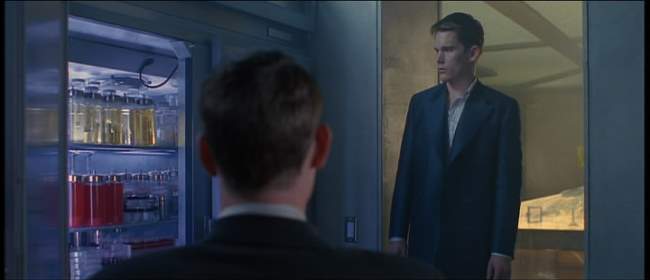
Vincent succeeds in fooling Gattaca personnel with the urine and blood samples, and by almost neurotically ensuring that any genetic tissue of his will not be left behind. He scrubs his body daily to remove excess skin cells or loose hairs, and constantly cleans his office space and keyboard to ensure there is no material left behind other than planted samples from Jerome. Due to his immense personal drive, Vincent quickly climbs the ranks of the organization. He is put on a project to design a year-long flight to one of Saturn’s moons.

Vincent’s dreams are almost coming true, but just as quickly his dreams are jeopardized when the lead flight director is horribly murdered – unfortunately the investigation has turned up one of Vincent’s “in-valid” eyelashes. Worse, his brother Anton is heading up the investigation. Complicating matters further, Vincent has fallen for a fellow Gattaca employee named Irene (Uma Thurman). Irene’s GQ is not good enough for flight, and has accepted her lesser standing in society. Ethan must escape the investigation while still keeping his astronaut and love life dreams alive.

The Acting: Gattaca boasts a terrific cast in which all key roles are wonderfully delivered. Ethan Hawke provides us with a terrific flawed but inspired faith child. Jude Law is just as good as the crippled GQ has-been, and Uma Thurman performs solidly in a supporting role as the love interest who has given up hope for fulfilling her dreams. The rest of the cast is also solid, including Alan Arkin as a beat cop, and William Lee Scott as Vincent’s brother. Along with solid pacing, the quality of the acting allow us to overlook some of the more problematic aspects of the story.

The Visuals: Gattaca goes for an understated, high-tech view of the future, where we are only treated to the higher echelons of society. Director Andrew Niccol plays with a number of oppressive color schemes to give us a dystopic vibe. Yellows and blacks are constantly employed, as are dull blue-grays to provide us a sense of hopelessness and inevitability. Greens and sleek, shiny charcoal grays are employed to convey the high-tech nature of society. Niccol and Cinematographer Slawomir Idziak consistently provide us with well composed shots and artistic visuals and set pieces that take in a range of lighting and shadows effects.
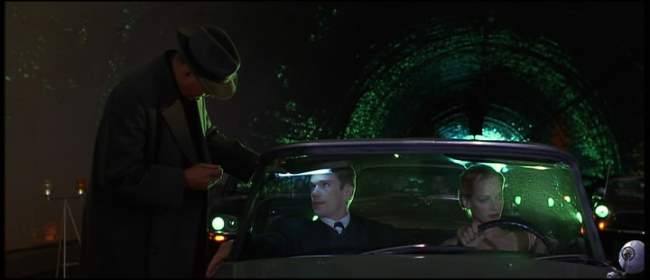
Surveillance Society Through Genetic Profiling: The vision of a domineering surveillance society we see in Gattaca may be more relevant now than when it was released in 1997. In thinking through a variety of policy options, the United States is currently debating the trade-offs between public safety and personal privacy. Worse, the technology surrounding our personal genetic code is right around the corner that will give insurance companies information on predilections we have toward certain diseases. It is hardly a stretch to imagine corporations and insurance companies engaging in genetic profiling within the next ten years or so. In that sense, Gattaca cuts to the heart of the issue – even though percentages may suggest clear issues with the majority of a population, there will still be outliers like Vincent. Gattaca tells us that personal drive can still overcome genetic superiority.
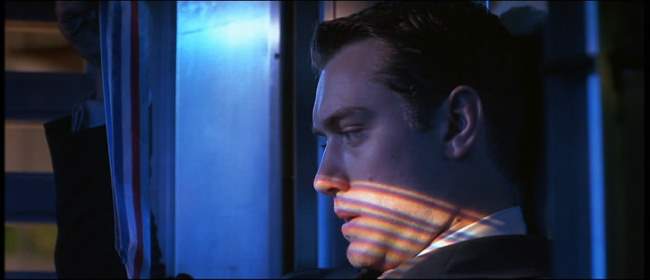
Genetics Is Overplayed: In many ways, Gattaca is a one trick pony in that it examines a world where genetic profiling drives virtually every aspect of society. While the vision is motivating, we are left wondering why extreme advances in genetics don’t lead to improvements in medical care. For instance, a prediction upon birth that a heart has a 99% of failure by age 30 is based on an assumption medical treatments will remain static. For the viewer to buy this vision of the future, we must believe that society has given up on the long-standing notion that technology can cure all ills. On a lesser scale, one wonders why a corporation as powerful as the Gattaca Corporation cannot figure a more streamlined method of ensuring the loyalty of their employees – one wonders who any work is ever done considering the employees seem to spent a significant amount of time verifying their identity and drug free status through the daily gauntlet of surveillance testing.
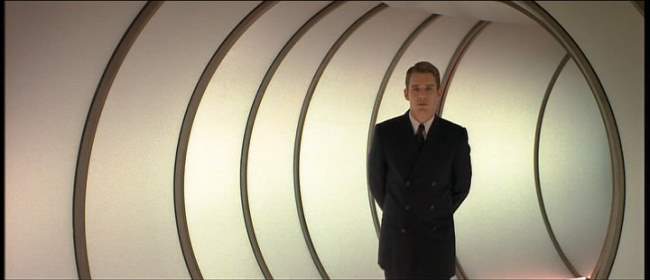
The Bottom Line: Gattaca is a very well made film that provides us a valuable cautionary tale into how genetic engineering abuses could lead to significant societal maladies. The pacing, acting and cinematography are all of consistently high quality. That said, the world of Gattaca isn’t as coherent as I would have liked. We get no sense of the political implications of genetic profiling, nor do we see any innovations other than genetic engineering. In this sense the future setting is perhaps more simplistic than was necessary. Additionally, some of the plot points seem over-contrived. The last week of Vincent’s life prior to launch has too much going on (a new love interest, a murder investigation headed up by his brother, issues with Jerome), and there was probably a bit of overkill on the sentimental ending. That said, Gattaca is a great flick, and very much deserves a viewing.
Movie Review By: hughie522
Year: 2004
Directed by: Jian Hong Kuo
Written by: Christopher Hatton
IMDB Reference
Degree of Cyberpunk Visuals: High
Correlation to Cyberpunk Themes: High
Key Cast Members:
- Dash MacKenzie: Genevieve O’Reilly
- Victor Huang: Luoyong Wang
Rating: 6 out of 10

SFAM NOTE: We welcome new reviewer hughie522, who uploaded this review into the Review Forum. If others are interested in joining the review team, please post a message in the review forum.

Overview: Few would consider Singapore to be the home of cutting-edge science fiction and even less would be swayed by the island nation’s first science fiction film, ‘Avatar’. The first forty minutes are cringe-worthy; poorly constructed characters, dodgy VFX and some of the worst dialogue outside a Ishiro Honda film are likely to put many viewers off straight away. However, ‘Avatar’ offers a little more than your cookie-cutter tale of good vs. evil wrapped in a sleek (if not cardboard-like) sci-fi setting. Transhumanism, corporate greed, social engineering, cheating death – all feature in an interesting little science fiction romp that unfortunately suffers from a very limited budget. Our story begins…
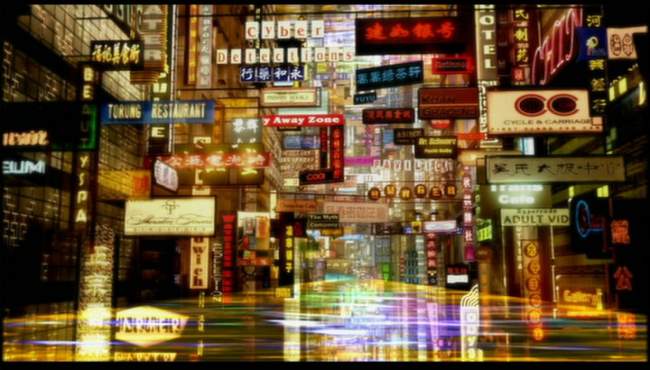
Synopsis: In the early 21st century, the entire free world is connected through the CyberLink (think ‘internet meets cyberspace’), the backbone of all communication and financial trading (ie. the stock exchange). The influence of the CyberLink is most felt in the city-state of Sintawan, a sprawling metropolis where corporate greed and personal gain rise above all else. Men (and women) such as Joseph Lau (David Warner, ladies and gentlemen!) are practically Gods over their own domain, the CyberLink ensuring their continued dominance over Sintawan through the megacorporations. Five megacorporations in particular – one of which is owned by Lau - appear locked in an epic game of wits with the people of Sintawan as the chess pieces.
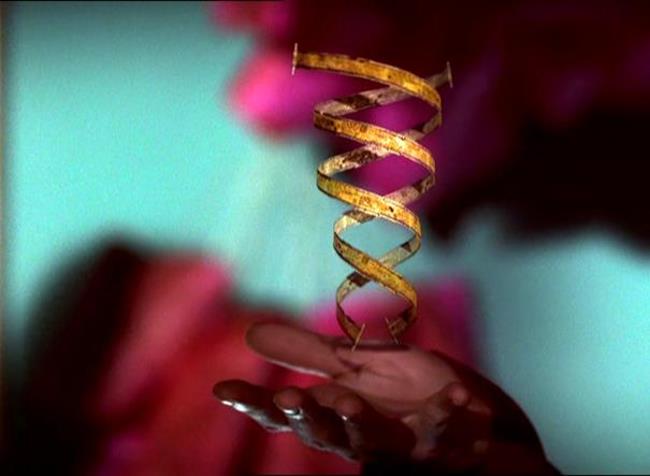
Not that the people actually realize this, oh no. They are too busy with their own private agendas to even notice! Although a vast majority of CyberLink users are legitimate, illegal users do exist and often use ‘SIMPLANTS’ to hide their true identities (sort of like using a disguise and a false ID). ‘SIMPLANT’-users are often tracked down by freelance bounty hunters such as Dash MacKenzie (O’Reilly) or, more commonly, by Ident cops such as Detective Vic Huang. Dash is contacted by Joseph Lau – as are the Ident Police – to track down an illegal ‘SIMPLANT’-user, Edward Chang. It seems straightforward enough, until Dash and Detective Huang discover a massive conspiracy involving the CyberLink, Joseph Lau and the other megacorporations. This game just got deadly…
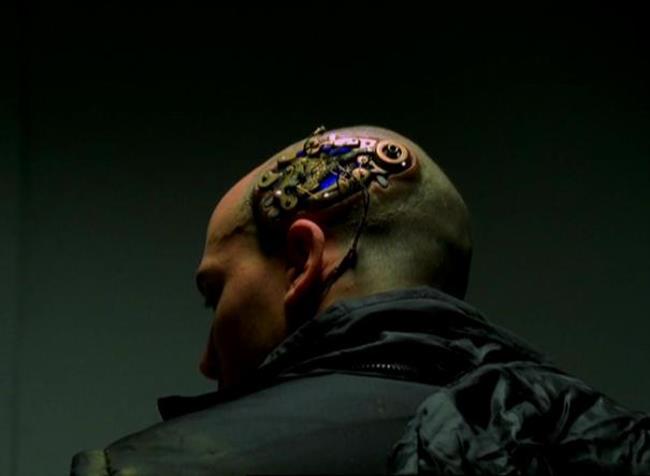
Analysis: To be frank, ‘Avatar’ is hardly ‘award-winning entertainment’ (though apparently it has already picked up two at a Spanish film festival) and will not blow anyone’s socks off. It is not destined to become a sci-fi classic or even a cult film, and is likely already forgotten by those that noticed it to begin with. Though it is not without its merits; the technology is fantastic: holograms are often used to hide the truth (such as disguising the fact that a prominent, five-star hotel is in desperate need of an exterminator and a few coats of paint), handheld communicators for video calls, micro-scale robots disguised as insects (such as beetles and dragonflies) that are used to project holograms and undertake surveillance, the concept of people that live inside the CyberLink and those that have augmented their bodies with technology (such as my friend below)…it is absolutely incredible that so much was achieved on such a limited budget.

Cyberpunk Musings: There are a number of interesting aspects of Avatar which benefit from further exploration.
- Ravers: Ravers are part of Sintawan’s subculture. Augmented human beings with a gang mentality, they are fiercely anti-corporate and anti-government. Ravers are all connected through a telepathic link-up that is separate from the CyberLink and frequently use ‘crash-bangs’ (handheld electromagnetic pulse devices) to damage the city-state’s infrastructure (ie. at one point in the film an organised group of ravers attempt to take down Sintawan’s mass transit system and partly succeed). All appear to have the same ‘left-brain implants’ that have an almost ‘retro’ feel to them. Possibly the coolest part of the film.
- City-states: There already exists cities with populations and gross domestic products (GDPs) greater than that of most third- and second-world countries. Sintawan appears to be governed by an organisation similar to the United Nations, though the corporations have been challenging this seat of power for some time. It is not too far fetched to stipulate that a large enough city (such as New York) could break off from the mainland and declare itself an independent state in the near future.
- Avatars/Holograms: Though never referred to as ‘holograms’ as such, these feature predominantly in the film. For example, one of the corporate heads is suffering from terminal cancer and has had his body put in a state of hibernation. His mind, however, remains fully function and an ‘avatar’ (a holographic representation of him) continues to act as the functioning head of the corporation, albeit only within the confines of his office. As mentioned before, holograms are also used to ‘cloak’ certain objects and sometimes create very believable deceptions (such as the six-star hotel).
- Surveillance and ‘Bugging’: Mini-robots disguised as very believable imitations of dragonflies (and to a lesser extent, beetles) are used throughout the film for audio and visual surveillance and the projecting of holograms. If you think that you have been ‘bugged’, then you are probably right!
- The Spirit and the Flesh: Several characters (and one in particular) practically live inside the CyberLink. One such character’s body is a complete mess (he is severely overweight and is always ‘jacked in’) while his ‘spirit’ seems almost free within the virtual confines of the CyberLink. The CyberLink also offers a sort of perpetual ‘afterlife’ for those who have died in the real world (much like Armin Mueller-Stahl’s character in ‘The Thirteenth Floor’).
- Social Engineering: Suppose that chaos theory is true; that every action and every decision radiates outwards and has an effect on other things and other actions and other decisions, exponentially increasing as it pushes out. Now suppose that chaos theory is somehow controlled. That someone higher up is pushing all the buttons, willing us into certain actions and certain decisions that is slowly shaping our culture. Now imagine that person ‘higher up’ is one of five corporate heads, who are all out to win a game of wits with human beings as the game pieces. Scary, no? This is the BIG issue in ‘Avatar’, and the one that ninety percent of the film is structured around. So what if the game has brought great prosperity to the people of Sintawan; it’s still motivated by greed, is it not? Is destroying the game worth the cost destroying modern society? You decide.
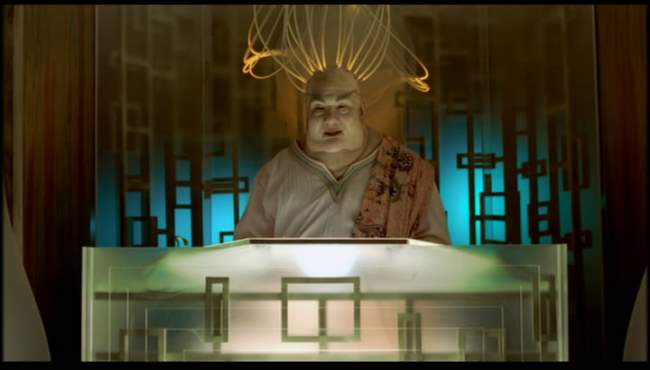
The Bottom Line: If you watch this film as I did – whereby I was expecting your typical, low-budget sci-fi action romp – then you might be pleasantly surprised. Though not that greatly. ‘Avatar’ is a film possibly best suited to die-hard sci-fi fans with no sense of taste (like moi) and who are easily impressed by a few interesting ideas and flashy set pieces (also like moi). Otherwise, steer clear and stick to the bane of ‘thinking-man’s science fiction’ (yes, I am referring to ‘The Matrix’ sequels). ‘Avatar’ has plenty of ideas, though permitting it any more than six stars would be a crime and an insult. The bottom line: CONSUME AT YOUR OWN RISK.
Movie Review By: SFAM
Year: 2000
Directed by: Udo Blass
IMDB Reference
Degree of Cyberpunk Visuals: Very Low
Correlation to Cyberpunk Themes: Very Low
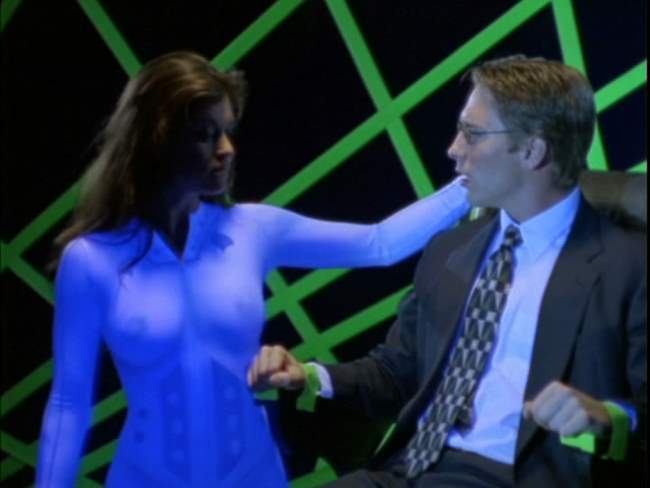
Overview: Every so often, I get around to reviewing something more to point out that it is NOT cyberpunk. I intended this category for movies like New Rose Hotel - while Gibson’s short story is top-notch, awesome cyberpunk, the movie of the same name is an unmitigated non-cyberpunk mess. The other reason I review a non-cyberpunk movie is because even though the movie packaging or description may indicate some cyber elements, movies in this category are going for deceptive advertising to sell their flick. Some erotic spoofs of popular movies are downright awesome. My favorite cyberpunk spoof is probably the Terminatrix (I still need to do some screencaps for that movie). However, in many other cases, soft core porn productions will try to leverage off a big title, but in fact really doesn’t have much of anything to do with it. Sexual Matrix fits this pattern, having nothing whatsoever to do with the Matrix movies, or much of anything else cyberpunk other than VR love scenes.
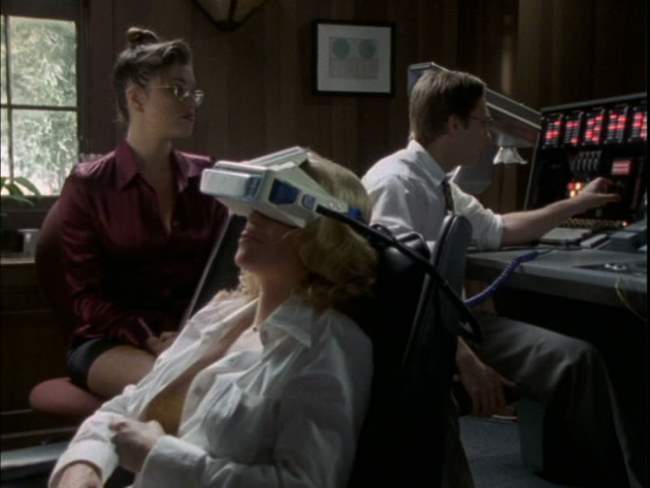
The Story: Sexual Matrix is pretty straightforward – a professor looks to get funding to build a prototype for helping people act out their fantasies in VR. To get started, he cons a local university into thinking he has funding lined up from a major corporation. The university, in their infinite wisdom doesn’t check his lie, and instead sends an ultra-hawt grad student to “oversee” his research. For some reason, the prototype appears already built, so no real work is necessary, other than a few twists of knobs on the Star Trek looking light panel. From this point, most of the movie involves students and test subjects coming in for fifty bucks to try out the VR system. There’s a brief human interest story dealing with the professor and his hawt assistant, but this isn’t worth going into.
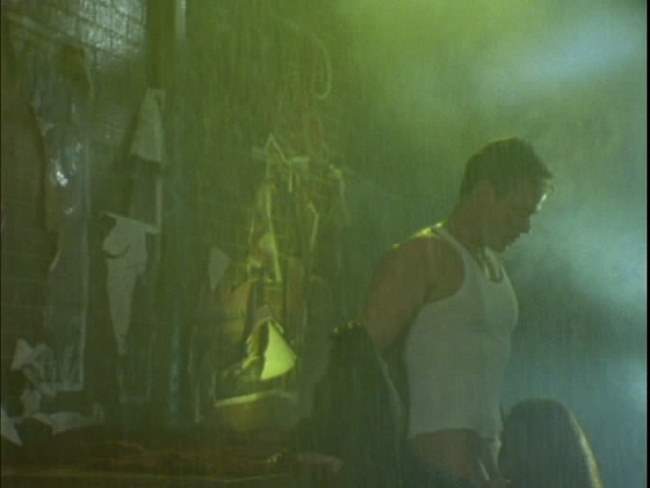
The Bottom Line: Again, nothing special here from a cyberpunk perspective. The movie itself is decent quality production. Their “fantasies” are done up in decent quality production soft-core porn, but there’s no cyberpunk aspects and only one that shows cyber-type scenery. Most are regular soft-core porn scenes. If you’re interested in a decent quality soft core porn showing lots of breasts in a façade VR setting, Sexual Matrix may be of interest. I do however deduct a quality point for the misleading cover and description.
~See movies similar to this one~
Movie Review By: SFAM
Year: 2006
Directed by: Warren Amerman
Written by: Warren Amerman & Marty Langford
IMDB Reference
Degree of Cyberpunk Visuals: Low
Correlation to Cyberpunk Themes: Medium
Key Cast Members:
- Magdalena: Amy Shelton-White
- Jim: Robert Weingartner
- Arthur: Sanjiban Sellew
- Andrew: David Joseph
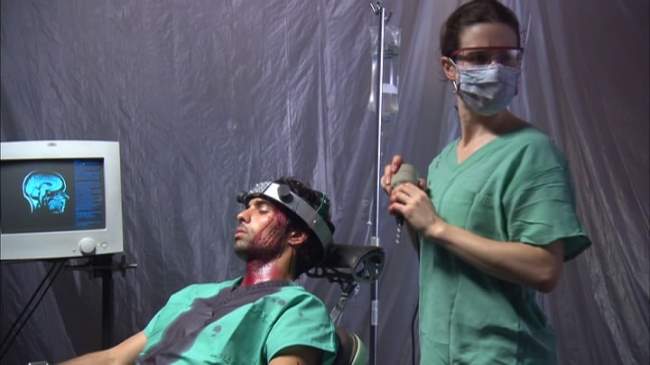
Overview: Rarely do we find low-budget horror movies aspiring to be as intelligent and ambitious as Magdalena’s Brain. Reportedly shot on a shoestring budget of $25 - $30K, Magdalena’s Brain is a professional looking film with some interesting man-machine interface ideas. To limit costs, most of the movie takes place in a single warehouse setting. Unfortunately, this psychological horror is probably a bit too slow for most, and doesn’t have enough gore for the average horror fan (although there are a few good freak-out scenes). But if you do stick with it, you get treated to a fascinating ending twist.
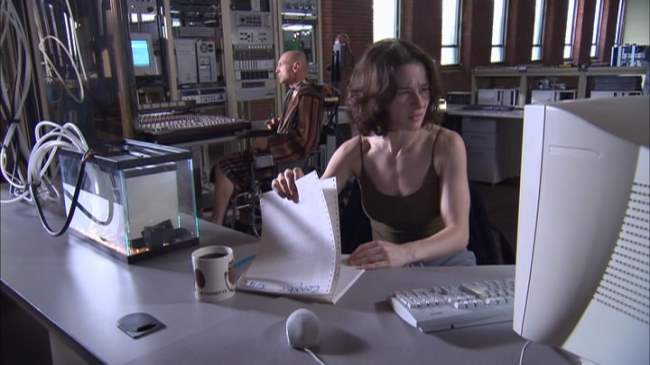
The Story: Former brain surgeon, Magdalena (played wonderfully by Amy Shelton-White) is now a reclusive alcoholic, living in a warehouse, who continually changes out shrinks in the hopes of gaining some semblance of peace. Four years after a tragic accident that left her brilliant husband-scientist, Arthur (Sanjiban Sellew) a quadriplegic and their research in tatters, Magdalena has persevered in the fleeting hopes that things will improve. Magdalena has designed an implant that allows computer-assisted dialogue with her husband. With communication restored, they have been able to continue their research in developing a synthetic brain that processes information 1000 time faster than humans. While the last four years have been slow going, recent advances have shown promise. Currently a blank slate, the organic, crystalline brain structure appears ready memories implanting. Andrew (David Joseph), a love struck former patient of Magdalena (he has inoperable brain cancer), seems to be an obvious test subject, as he will do anything to win over Magdalena.

Magdalena reluctantly takes Arthur’s advice and accepts the help of her creepy brother, Jim (Robert Weingartner), in working out how to kick-start the organic crystalline brain. First, they will download Arthur’s memories into the crystalline structure, then insert the structure into Andrew’s brain, and finally they will remove the tumor. As the story continues, Magdalena becomes more unstable. As everything comes to a head, it appears as if the same issues that led to the tragic accident four years ago might be recurring.

The Pacing: The pacing in Magdalena’s Brain is problematic in places. The first half of the movie crawls at a snail’s pace. In part it’s due to the plot, but the editing decisions certainly contribute. Eventually, it picks up in the second half. The middle of the second half is really where Magdalena’s Brain hits its stride, both in plot and pacing. The movement is brisk and the scenes really tie together well. Unfortunately, the ending action sequence comes across a series of jumbled scenes (again, I’m blaming the editing here). Instead of the frantic chase, they would have been better served having their victim do the slow, bloody crawl, with Magdalena walking after while engaged in her personal struggle. The story would have worked the same either way, but the chosen course asks us to believe that a brain surgeon can’t determine if someone is dead, and that a guy who just had a hole drilled in his brain can run for his life.
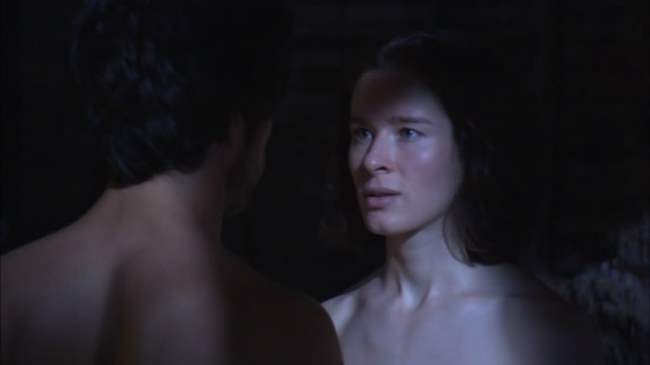
The Acting: If there’s one decision that Director Warren Amerman made that other extremely low budget film projects should consider emulating was hiring a real actor/actress to play the lead role. Even with having only a $25,000 budget, a large chunk of that went toward hiring Lost-Angeles based actress, Amy Shelton-White. Had they not done this, Magdalena’s Brain might have been a disaster. Shelton-White shines to the point that she single-handedly carries the project toward respectability, while adeptly displaying a wide range of talent and emotion. The script is problematic in places, the pacing is too slow, and the rest of the cast are role players at best, but in the end this film still works due to Shelton-White’s performance. Being in virtually every scene, she seems to bring out the best in the rest of the cast. I say this because the rest of the cast suffers when in monologue type situations, but generally hold up well when interacting with Amy. David Joseph (Andrew) in particular looks really shaky in places where he’s basically on his own, but gets lots better when interacting with Shelton-White. I haven’t seen Shelton-White in anything else, but clearly she has the chops to go places. Other the lead, the only performance with mentioning is Robert Weingartner – the “look” he generates as a creepy side-kick really worked well.
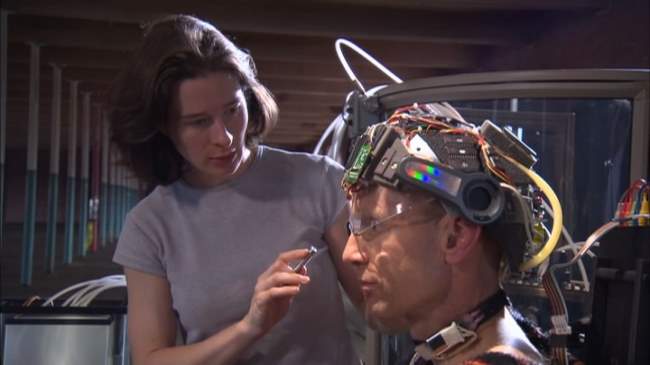
The Cinematography: Often indie films that venture into the Science Fiction genre attempt to make up for low-budget effects with innovative cinematography and lighting. This definitely is the case for Magdalena’s Brain. The use of lighting and shadow always seems to be in the forefront of Amerman’s thinking when composing a shot. Some scenes, such as the bowling scene, really don’t seem to have a place in the film from a story standpoint, but are probably left there due to the wonderful lighting and composition. Throughout the film Amerman is able to take a truly dingy set and come up with some wonderful shots. Also interesting is the lighting and sound choices for the flashbacks, although the horror shots have a cheesy low-budget feel to them. This, along with Shelton-White’s performance is able to help get the viewer through some of the pacing and editing issues.
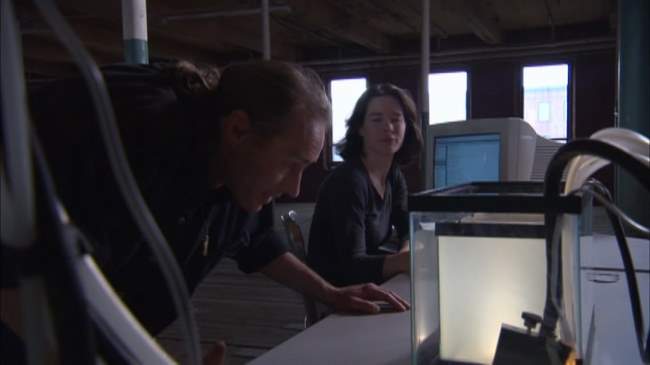
Problems With Organic Brain Design: Magdalena’s Brain uses a different approach toward creating AI. Instead of building a set of programs that mimic some trait of humanity (referred to as the “brute force method), they attempt to replicate the operations of a brain. Through the creation of a “crystalline lattice work in a gel suspension” – the thought is to create a structure that supports the firing of electrodes in a way that allows it to build its own pathways and connections. This part of the techy “mumbo jumbo” was wonderfully thought out, sparking interesting thoughts on how one might go about connecting such a “blank slate” learning structure artificial senses so that it might interact with the outside environment. One can imagine that a structure such as this, once connected to sensory input could grow at an impressive rate
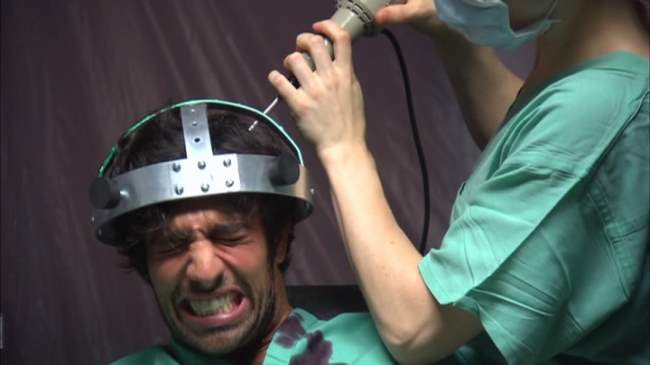
Unfortunately, this is where their science falls apart. They “solve” the blank slate problem by simply “downloading” Arthur’s memories into the crystalline brain. Worse, the brain will apparently make its own pathways using a “first-come, first-served” method of storage. Not only does this approach smack of a “miracle occurs here” scaffold, it also removes most of the innovativeness of the crystalline brain learning structure – as opposed to the pathways being organically grown based on ongoing input from its environment, they simply load a bundle of memories (which are apparently discrete chunks of data) up in sequential fashion. In doing so, they seem to be valuing the mass-storage view of the brain while discounting the interconnectedness of the pathways and concepts. This wouldn’t be too much of a problem accept that their synthetic brain seems based on creating its own connections based on organic growth.

Integration of Synthetic Processing Structures with Human Brains: The most interesting cyberpunk thought in Magdalena’s Brain involves integrating synthetic processing structures with human brains. In the movie, the integrated structure will already have a sentient presence in it (see the downloading memories part above). This is an interesting approach toward building a cyborg with synthetic thinking capabilities, and is a somewhat different approach from say, the Ghost in the Shell method of increasing human capacity. In the GITS Cyborg model, computers are essentially integrated into the human mind, almost as a huge memory bank. The action thinking and decision making largely remain with the human portion of the brain (there are also fully AI processors like the Puppet Master, but they aren’t cyborgs). In the Magdalena’s Brain approach toward cyborgs, one wonders what happens when the two brain structures (synthetic and natural) occupy the same body – will they work in harmony; will one dominate the other; or will a type of schizophrenia emerge? This is all the more interesting when transposed against the psychological struggle Magdalena is undergoing.

Is Magdalena’s Brain Cyberpunk? Magdalena’s Brain is one of those movies that I think barely makes it into the genre. It takes place in the present, not near future (at least that we can tell), and has no connections to evil corporations. Nor does it have much in the way of cyberpunk visuals. It does however have negative impact of technology down in spades, and an interesting take on the fusion of man and machine. For these reasons, I’ve decided to include it, but just barely.

The Bottom Line: Magdalena’s Brain puts forward a terrific production considering the virtually non-existent budget. It’s very difficult to do a convincing science fiction movie on that type of shoot. I would like discuss the psychological horror aspect of Magdalena’s Brain, but won’t for fear of ruining the ending. The high points are definitely Amy Shelton-White’s performance, and a good number of some well-shot scenes. The audio FX are also worth mentioning, but the score doesn’t always fit. That said, the pacing issues will significantly reduce the potential market for Magdalena’s Brain, as most horror (and many cyberpunk) fans won’t stick with it long enough to get to the fast-paced ending. While it certainly has its problems, Magdalena’s Brain gets a passing grade. There is enough here for indie fans to give it a go, and enough of a jolt at the end that many horror fans will enjoy as well.
Movie Review By: SFAM
Directed by: Michael Winterbottom
Written by: Frank Cottrell Boyce
IMDB Reference
Degree of Cyberpunk Visuals: Low
Correlation to Cyberpunk Themes: High
Key Cast Members:
William Geld: Tim Robbins
Maria Gonzales: Samantha Morton
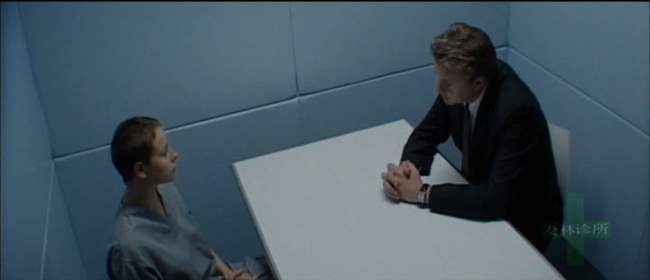
Overview: Code 46 is a movie that generates significant disagreement on ratings. The pacing is glacially slow, but there are enough interesting ideas that many viewers will really dig the final product. Viruses as transhuman upgrades, memory removal, and problems brought on by mass cloning all are mashed together to give an interesting, but somewhat incoherent view of a near-term dystopic future. The cinematography is interesting, and the story itself may end up working well enough for some to enjoy the final product.
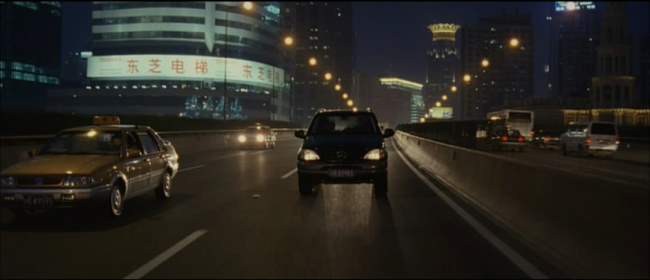
The Setting: Code 46 takes place in a non-specific near future, where overpopulation and degradation of the earth have led to a situation where cities have become protected entities. The population is now divided into those living in the outside and those citizens who have rights to live within. Each city has restricted access – a person is required to have “papelles” (a valid passport/visa) to enter. For some reason, even though there is massive overpopulation, cloning has been used in an overabundant fashion. There is even a law, Code 46, which restricts the relations between those who are genetically similar. Viruses have been genetically engineered to allow new capabilities for people, but also have become so deadly that people must have a valid insurance policy to stay in the city.
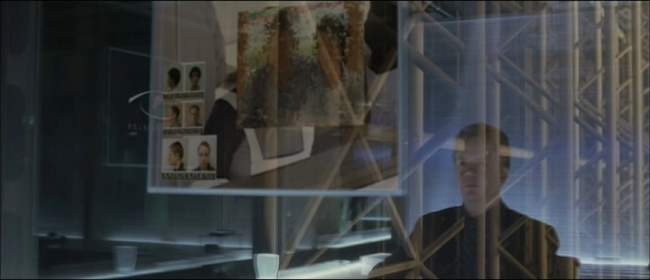
The Story: William Geld, played by Time Robbins, is an insurance investigator imbued with an empathy virus, who’s been tasked to track down a forged papelle ring in Shanghai. Shortly after arriving, William quickly determines that the guilty party is a worker named Maria Gonzales (Samantha Morton), but he doesn’t turn her in. For some reason, even though he is happily married, he is strangely attracted to Maria, so he falsely implicates someone else. After following her home, Maria and William become fall for one another. William leaves the next day for home, but is brought back a few weeks later when the forged papelles continue to be produced. He decides to turn Maria in, but she has left. After investigating, he finds that she had incurred a code 46 violation. William fears that he is the genetically similar party and sets off to find her.
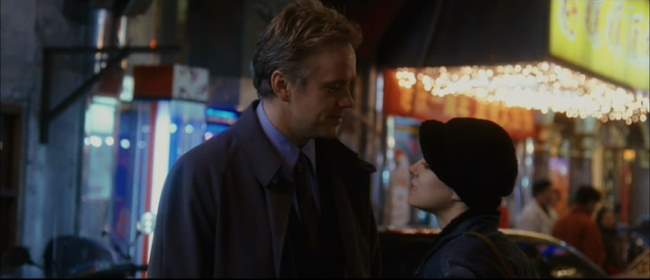
The Acting: Director Michael Winterbottom seems to be going for a Lost in Translation type vibe, but this feel doesn’t really work very well. The leads both turn in believable performances, but something is missing. While the world certainly has an alienated feel, there’s never a sense that the chemistry William and Samantha is strong enough to support a “genetic attraction.” It’s all cerebral. Unfortunately, with the rediculously slow pacing of the movie, this merely adds disconnectedness with the audience.
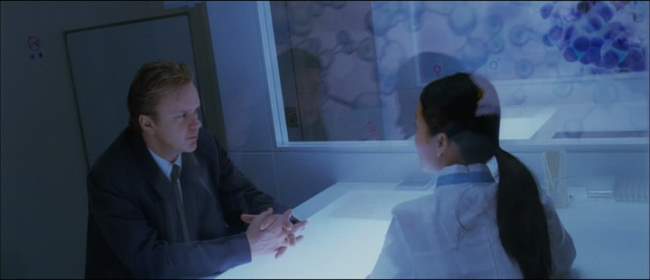
Viruses as Genetic Upgrades: In Code 46, custom made viruses are used for short to long term sensory upgrades. William has an “empathy” virus which allows him to read people’s thoughts. Other viruses allow skills to be developed. The weird thing about the use of viruses as an idea for genetic manipulation is that it causes all sorts of dangerous linkages. For instance, viruses can be passed on, and worse, can change over time. This, I think, is why insurance may play such a large role in Code 46, and why the cities are cordoned off (again, this isn’t really explored all that well). It does make you wonder though, how exactly will genetic manipulation be used in the future? If we are to look for transhuman-like upgrades, are we going to be purchasing an ensemble of cocktail viruses?

Futuristic Low-budget Worldbuilding: Without a large budget, and the absence of CG, director Winterbottom struggles to make his world look futuristic. Mostly based on locations, Winterbottom also emphasizes pastel florescent shades to indicate futurism. Pastel florescent pinks, greens, and blue tones are used in most of the otherwise normal looking city scenes. The outside world is mostly desert, apparently brought on by the effects of global warming, whereas the people all dress like they’re in New Dehli. The night scenes are generally neon shots of Shanghai, which sort of fit in the cyberpunk, near-future genre. Still, there are glaring problems which break suspension of disbelief, where the futuristic world looks identical in most places. The most obvious one deals with the liberal use of modern day cars - apparently the auto industry got laid off after 2003. A cheap solution would have been to jimmy up a few futuristic fiberglass bodies to stick on-top of a jeep or VW, but instead, we are almost left with an alternate view of the present.
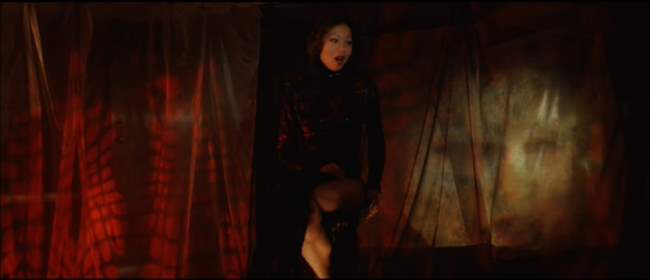
Cyberpunk Tower of Babel – the Creole Merging of Languages: In Code 46, English seems to be the only language used, but it has been “creoled” in that many of the words have been replaced with words from other languages. Boy and girl is now chico and chica; paper is now papelle; hello has been transformed to “meehow”; discontinued is now discontinuago. The cool part about this is how naturally the actors work the word changes into the dialogue. The problematic part of this is that within 50 years or less, the world (even if only the industrial parts) would transform into a single language. If there even is a trend toward this, I think we’d be looking more like 300-500 years for a place like Shanghai to do away with their native Chinese. The more interesting question this raises though is the issue of whether the human race is moving toward a reverse Tower of Babel, or whether the local cultures will become more entrenched as a defense against a globalized language and culture. The world is getting smaller all the time – the implications of this are far from understood right now.

Cyberpunk Oedipus Complex: Harkening back to Freud, Code 46 explores the issue of a man in love with his mother. In Code 46, this connection is so strong that it exists even when the relationship itself is not known to the participants. Personally, I never bought into anything as generalized as Freud’s Oedipus complex, and I don’t know that it works all that well here. But the genetic/cloning slant to this question certainly raises some interesting thoughts. Still, with the advent of overpopulation, its hard to see why people would resort to making an abundance of clones. Perhaps for nefarious thoughts such as body replacement parts, but it would be a stretch for an overpopulated world to create massive versions of the same person. Based on the huge insurance slant in Code 46, we might assume it had something to do with contaminated bodies, but like so many other aspects of this future world, this is never really explained.
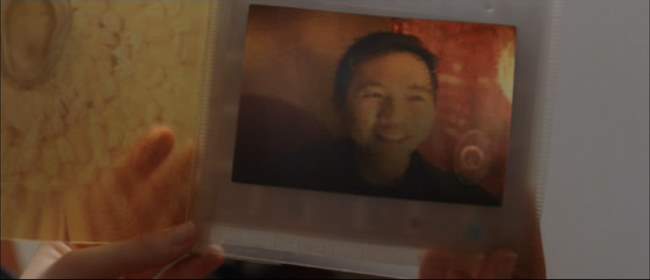
Removal of Memories: The idea of memory modification and their removal has been explored in other movies (Eternal Sunshine of the Spotless Mind, for instance), but the general question is probably similar. Are memories discrete entities that can be targeted and wiped out, or is something more organic going on? Also, if your spouse cheats on you, will a future option for conflict resolution be to simply have the memories of the offending person and the deed itself removed? If so, would you still think your spouse cheated?

The Bottom Line: Although the plot runs at a glacial pace, and the chemistry between the actors is stilted at best, the inclusion of interesting thoughts, however haphazard, potentially make Code 46 worth a watch. I would have liked to see a bit more clarity on the basis for the technology selections, and definitely would have liked to see more emotive chemistry between the leads. The “Lost in Translation” vibe just doesn’t work here all that well. Bottom line, if you’re someone who doesn’t mind watching interesting looking paint dry, you might end up liking Code 46.
~See movies similar to this one~
Movie Review By: SFAM
Year: 2006
Directed by: Christian Volckman
Written by: Alexandre de La Patellière, Mathieu Delaporte, et al.
IMDB Reference
Degree of Cyberpunk Visuals: Very High
Correlation to Cyberpunk Themes: Medium

Overview – Good luck in finding a copy! Once upon a time, Renaissance was one of my most anticipated movies of 2006. Originally released in France on March 15th, I eagerly awaited its September release in the US. My anticipation was heightened in that I was even contacted by Miramax representatives as part of a pre-hype blitz. So imagine my surprise when its release in the US only comprised a few select cities – unfortunately my city didn’t make the cut (thanks Miramax!). Similar to so many other good, but foreign science fiction and fantasy flicks, instead of getting a nice theatrical viewing, I was yet again forced wait and then later buy an import (or pirated – sometimes you just aren’t sure) DVD off of eBay. If you are in the US and are interested in seeing Renaissance, chances are you’re in the same boat. One would have hoped that a movie as visually stunning as Renaissance would have been at least able to quality for a DVD release, but clearly something larger is going on here as many other foreign genre films are in the same boat.

The Setting: In the year 2054, mega-corporations are all-powerful, with tentacles in all aspects of life. The divisions between rich (megacorps) and poor are greater than ever. Paris has grown in layers, with high-tech buildings pushing every further into the sky. Although the city is sleek and stylish, most people live a pathetic existence. In Paris, the Avalon Corporation rules the cityscapes. The police force is not immune from their pressures, and often become their lackeys.

The Story: When a promising young biogeneticist named Ilona (voiced by Romala Garai) from the Avalon Corporation is kidnapped, detective Barthélémy Karas (Daniel Craig) and his team are brought in to investigate. As Karas interviews all the key players, it becomes clear that this isn’t a simple missing person case, as the details of the disappearance become increasingly more bizarre and complicated. The Avalon corporation president, Dellenback (Jonathan Pryce), not known for his loyalty to his workers, is extremely interested in her return. Ilona’s bioengineering mentor has a strange past, and stopped doing research after an accident from 2006. Karas befriends Ilona’s older sister, Bislane (Catherine McCormack), who tells of a stolen book.

Similar to Howard Hawks’ “The Big Sleep” (1946), Karas spirals back and forth between the key players as more clues are provided. Karas uncovers a darker side of the Avalon Corporation, and of Ilona’s mentor, Dellenback. Furthermore, it appears that the secret to immortality has been discovered, and is tied to Ilona herself. As Karas and Bislane continue searching for Ilona, the list of enemies grows. The key players are getting offed, Karas is booted from the force, and is now in fear of his life. Worse, they are discovering that humanity itself may be at risk if Ilona is found.

The Characters: It’s not a stretch to say that virtually every character in Renaissance comes “cookie cutter” from the old noir movies, with a nice slice of traditional cyberpunk thrown in the mix. From the honest but jaded crusty cop with a soft spot to the megalomaniac mega-corporation leader, to the shady friend the cop goes to when he needs a favor to the femme fatale; don’t expect freshness, because it isn’t coming. Like the old noirs, everyone in Renaissance is flawed; everyone is gray – which does make for an interesting contrast when transposed on such stark black and white animation.

The Atmosphere: While the story falls short, the look of Renaissance fully original and is flat-out amazing. If Renaissance is best described as style over substance, the style really comes STRONG to the party. Stark black and whites dominate virtually every shot. Shadows are in abundance, and usually highlight the main action points. Gray is used sparingly, and is usually applied to change the mood of the scene. To its credit, Volckman succeeds at creating a near-future world that is deeply flawed but not overly futuristic. The cityscapes are incredibly detailed, and give the impression that there are always a bevy of interesting happenings occurring. A transparent glass-like substance is now used to make walkways above and below the roads – this more than anything creates a sleek, near-future ambience. The stark black and white look of Renaissance works well both in the daylight and evening shots, both having shadows prominently placed in virtually every frame.

Traditional cyberpunk conventions are often applied, including huge billboards of beautiful women that extol the virtues of the Avalon Corporation. Avalon fills the role of the dominating mega-corporation that owns and controls virtually everything in Paris. Nothing is beyond their grasp. The police are on their payroll, and the entire city appears to be under surveillance. Immortality, derived through advances in bioengineering (initially undertaken by a Japanese scientist) is the dominating technology intended to challenge God’s position over humanity.

Similarities with Sin City: Volckman stated he was interested in creating a visual feel similar to what one might get when looking at a painting. In terms of what was produced, yes, the look is definitely similar, but Renaissance is not copying Sin City. Although Sin City came out first, Renaissance started its production far before Sin City. In terms of look, Renaissance really does match very closely with the Sin City graphic novels – more so than Sin City in fact. But while it also is a neo-noir, the dialogue and mood of Renaissance is far more like a corporate espionage version of a standard 40s detective noir (think “The Big Sleep” with corporations instead of the mob), whereas Sin City had more of a hyper-real, over-the-top neo-noir feel.

The Animation: Using an innovative motion-capture to rotoscope approach, where 24 cameras are used when shooting the actors, Volckman was able to work on the framing and viewpoint well after the shoot was complete, and then paint on the black and white animation. Unlike Linklater’s rotoscoping, where the actors’ faces and body appear to be constantly shifting, the level of precision used in Renaissance is significantly higher. When moving, the sprite’s actions are incredibly human-looking. There is a slight lag though when they first take action – a noticeable lag that’s slower than you would expect a person’s actions to be.

The Technology: While the basic story for Renaissance is straight cyberpunk neo-noir, the technology options provided are numerous and fairly interesting. Most visually arresting was the Holodeck sphere prison where Ilona is kept. Karas had a very advanced cybernetic eye implant that allowed him to identify people through solid objects – it also was able to be hacked by Avalon, the Mega-corporation. Computers are slick, now often just the size of a pen with a virtual display that arises upon command. Biotechnological modifications are in vogue, although not at the level of Ghost in the Shell. Similar to Motoko’s invisibility suit, the goons at Avalon have similar suits, although they look more like the soldiers in Jin-Roh than they do the hawt, naked Motoko. Holograms are now used in combination with pictures to remember people and events – in some cases, holograms interact with their human counterparts.

Do you Want to Live Forever? One thesis of Renaissance is the notion that immortality, if invented, would destroy humanity. Not a lot of backing is provided for this idea, but the idea put forward is that this irrevocable change in the hands of a mega-corporation would provide a method of control so powerful that society would no longer function. This is all the more interesting in that some are predicting that humanity will have the equivalent of immortality within the next 50 years. If this comes to pass, will the possibility of immortality be distributed evenly or will this be a tool of domination similar to in Renaissance?

The Bottom Line: Although the story and characters are not original, the animation and overall cinematography is both innovative and outstanding, and should not be missed. There is truly something unique in the look here that you just won’t find anywhere else. The voice and motion acting are more than passable and Nicholas Dodd’s score provides a wonderful combination of a 007 espionage flick with the haunting eeriness of the score from Stargate. As icing on the cake, the science, technology and architecture exhibited in Renaissance will make you think. It may be hard to find, but it’s well worth the time spent looking for it.
Page 2, More Screencaps–>
~See movies similar to this one~
|























































































